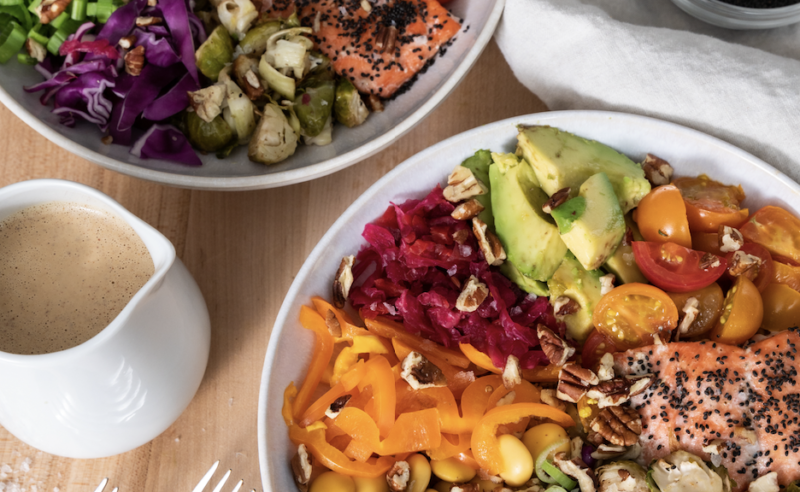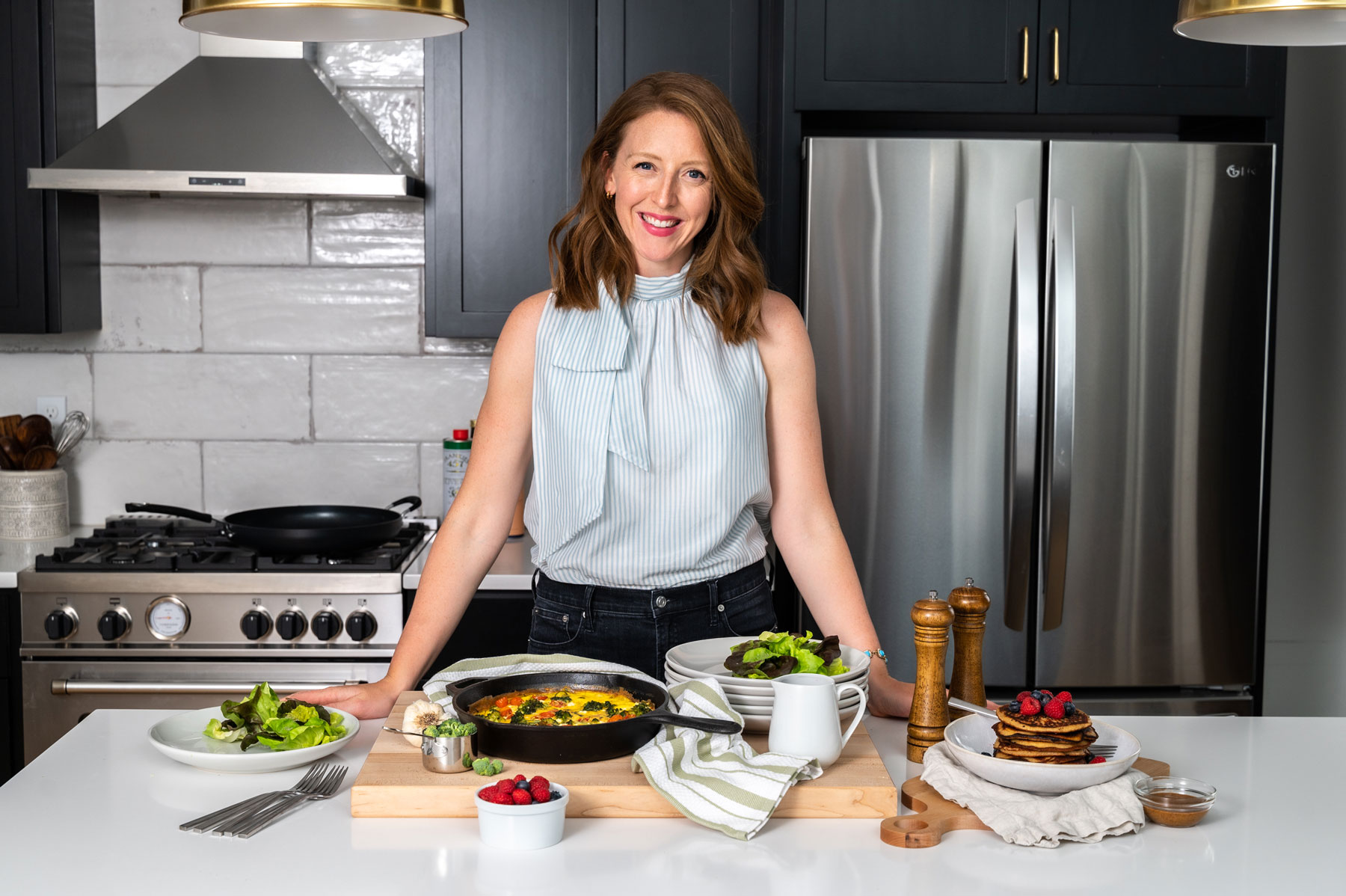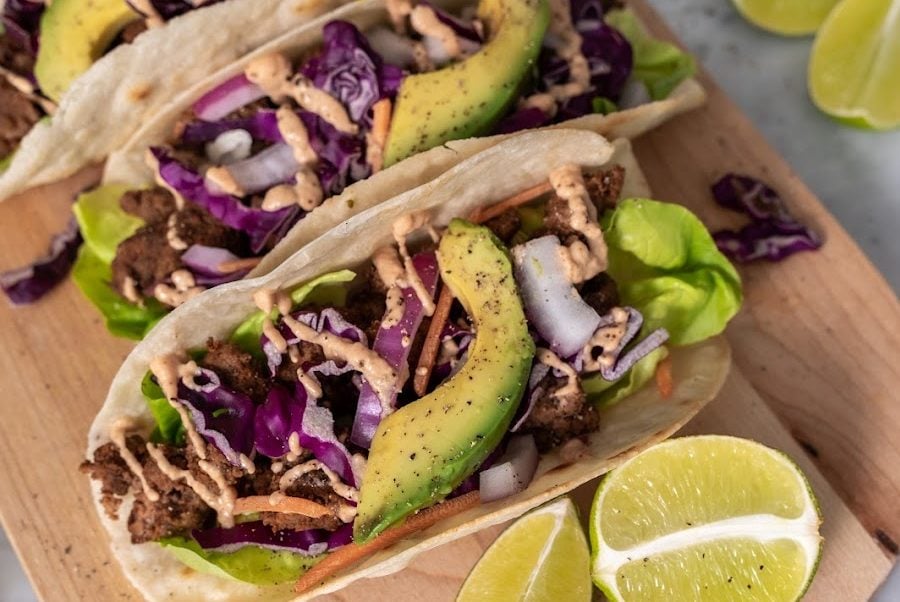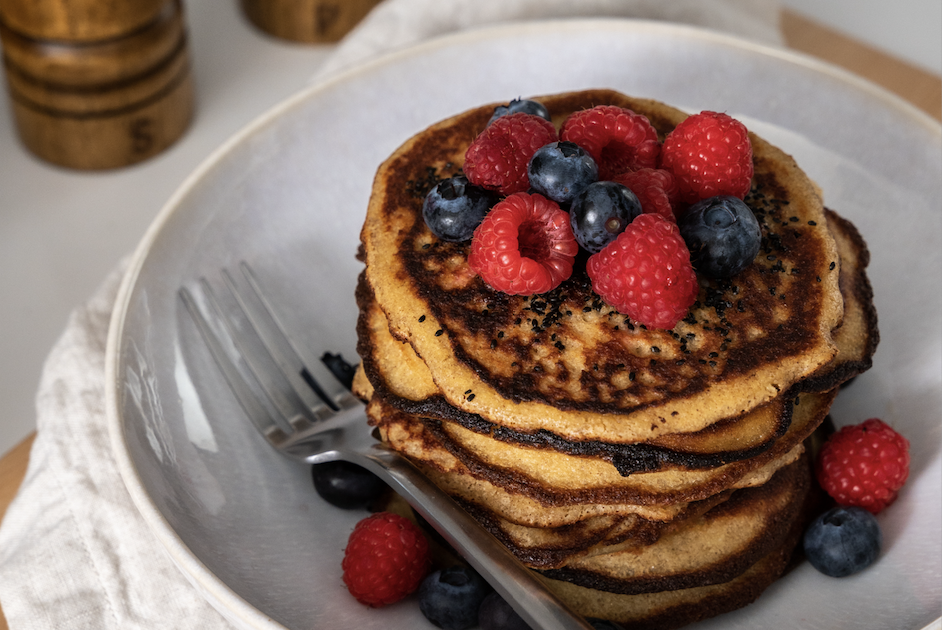Eating for metabolic health doesn’t have to mean eating the same thing every day. On the contrary, more variety in your diet means more nutrients to bolster your health and well-being.
“There are endless ways of satisfying the body’s nutritional needs,” says Levels Co-Founder and Chief Medical Officer Dr. Casey Means. “So instead of memorizing a narrow list of approved foods, I like to think about components of a metabolically optimal meal.”
According to Casey, an optimized meal should include these five elements:
- Fiber: Though technically a carbohydrate, fiber breaks down differently than other carbs, and most do not get absorbed. In fact, research indicates that fiber slows glucose absorption and generally improves metabolic health. Additionally, fiber reduces gut inflammation and offers microbiome benefits that are key to metabolic health.
- Omega-3s: Inclusive of alpha-linolenic fatty acid (ALA), eicosapentaenoic acid (EPA), and docosahexaenoic acid (DHA), omega-3s are critical to cell health. Benefits of these fats may include reduced inflammation, improved cardiovascular health, and increased insulin sensitivity.
- Micronutrients and antioxidants: Most Americans don’t get enough micronutrients. These vitamins and minerals are critical to supporting mitochondria, which generate cellular energy, as well as other core metabolic functions. Antioxidants protect the body from oxidative stress, a kind of cellular damage that can increase the risk of cancer, diabetes, and neurodegenerative disease.
- Probiotics: Probiotics are foods that have live bacterial populations, helping you maintain “good” gut bacteria that are critical to digestion and other facets of metabolic health. Regularly eating probiotic-rich foods may reduce your risk of complications associated with microbiome imbalance, including food allergies and digestive issues. Fermented foods, in particular, may increase the diversity of gut bacteria and, as a result, help reduce inflammation.
- Minimal sugars and refined grains: Sugary foods and refined grains cause elevations in blood glucose that affect your mood and energy level in the short term, and can increase your risk of disease—including diabetes, heart disease, and infertility—in the long term.
To get all these components in one easy-to-prep dish, Casey recommends trying a “metabolic power bowl,” a recipe that, she says, you can customize according to what you have access to and what’s in season.
“The key to a successful bowl is knowing which types of foods fit each category, and then mixing and matching to find out what tastes delicious to you,” she says. “It ends up being a really versatile meal because once you’ve got the five components down, you have hundreds of ingredients to choose from.”
In addition to generating exciting flavors, the combination of different ingredients can improve the body’s ability to absorb their nutrients. Cooking your cherry tomatoes in olive oil, for example, helps the body to absorb lycopene, an antioxidant in tomatoes that may lower your risk of cancer. Similarly, the combination of black pepper and turmeric may increase the body’s access to curcumin, which has anti-inflammatory and antioxidant properties.
In case you’re overwhelmed by the task of finding and preparing five different components, Casey notes that power bowls can actually be a very low-effort meal.
“The beautiful thing is that you can prep a lot of your components ahead of time—or buy them pre-chopped or frozen—and then the only thing you have to do on the day of is maybe cook your base,” she says.
Regularly making these bowls, Casey adds, can also help you cultivate an intuition around cooking for metabolic health.
“Every time you build a power bowl, you’re also building the habit of getting those five components into your meal,” she says. “In time, you start to automatically recognize, ‘Oh, this dish needs some omega-3s!’ Or ‘I have to throw some probiotics on my lunch!’ It becomes instinctive—and fun.”
Want to create your own power bowl recipe? Select one ingredient (or a few!) from each of the below categories. Alternatively, keep scrolling for Casey’s recipe from the video up top.
1. Metabolically-stable bases
- Cauliflower rice
- Broccoli rice
- Zucchini noodles/zoodles
- Konjac root noodles
2. Omega-3s
- Wild-caught salmon
- Wild-caught mackerel
- Wild-caught Sardines
- Basil seeds
- Chia seeds
- Walnuts
- Flaxseeds
3. Fiber
- Black beans*
- Lupini beans
- Chickpeas*
- Pinto beans*
- Cruciferous vegetables (cabbage, broccoli, cauliflower, bok choy, kale, watercress)
- Chia seeds
- Basil seeds
- Lentils*
- Avocado
*Note: Beans can cause glucose spikes in some people, though this effect varies from bean to bean and can be lessened when balanced with fat, protein, and additional fiber.
4. Colorful micronutrients and antioxidants
- Berries
- Bell peppers
- Beets
- Oranges
- Cherries
- Onions
- Pomegranate
- Radicchio
- Tomato
- Carrots
- Turmeric
- Ginger root
- Lemon
- Asparagus
- Boy choy
- Broccoli
- Brussels sprouts
- Purple cabbage, Napa cabbage, green cabbage
- Cauliflower
- Cucumbers
- Celery
- Green beans
- Arugula
- Collards
- Okra
- Zucchini
- Olives
- Mushrooms
- Shallots
- Green onions
- Chives
- Spinach
- Tomatoes
- Garlic
5. Probiotics
- Unsweetened yogurt
- Kefir
- Sauerkraut
- Kimchi
- Low-sugar kombucha
- Apple cider vinegar
- Miso
Optional: Top your bowl with a sauce that will tie the flavors together and fill any nutritional gaps. E.g.:
- Pesto
- Tahini
- Vinegarette
- Tamari
- Marinara sauce
- Nutty sauce (See below)
Casey’s saucy salmon power bowl
Ingredients
Bowl
- 5-6 cloves of garlic
- 1 tbsp pecans, chopped
- 1 bell pepper, thinly sliced
- 2 cups cherry tomatoes, diced
- 2 cups brussels sprouts, quartered
- 1 head red cabbage, chopped
- 1 bunch of green onions, chopped
- 1 yellow or red onion, chopped
- 1 avocado, sliced or cubed
- 1 head of cauliflower (plus broccoli stems if you have them on hand)
- 1 tbsp olive oil
- Salt and pepper
- 1 tsp turmeric
- ¼ cup lupini beans
- 3-4 oz wild-caught fresh salmon (you can also used canned salmon or mackerel, or smoked fish with no added sugar)
- ½ tsp lime juice
- Basil seeds or chia seeds
- Sauerkraut
Sauce
(from by I am Grateful: Recipes and Lifestyle of Cafe Gratitude)
- 1 cup unsweetened coconut milk
- 1 tsp minced jalapeno
- 1-3 tbsp minced ginger
- 3 cloves minced garlic
- 2 tbsp lime juice
- ⅛ tsp cayenne
- 2 tbsp tamari
- ½ cup raw almond butter or peanut butter
- 1 tbsp red miso
- Optional: 1 chopped date
Recipe
- Preheat oven to 400°F.
- Chop garlic (or mince using a small food processor).
Brussels sprouts
- Add Brussels sprouts to a pan and toss with a little olive oil, salt, and pepper.
- Roast in the oven at 400°F for 10-15 minutes until soft and fork pierces easily.
Salmon
- Lightly coat salmon with olive oil, salt, pepper, and a splash of lime juice.
- Place in the oven at 400°F and cook for about 12-15 minutes.
Cauliflower rice base
- Chop cauliflower head into 2-3 inch pieces and add to food processor. Pulse a couple times until the cauliflower looks like rice; don’t overpulse or it will become watery. Set rice aside.
- If you have extra broccoli stems on hand, chop into 2-3 inch pieces add them to the food processor as well for some broccoli rice.
- Add 1 tbsp olive oil to the pan. Saute the onions and garlic for 2-3 minutes. Add the cauliflower and/or broccoli rice to the pan and stir for 1-2 minutes.
- Add turmeric and a pinch of salt to the rice and stir for 3-4 more minutes. Careful not to overcook.
Sauce
- Add all sauce ingredients to a blender.
- Blend for 10-15 seconds, or until smooth.
Assembly
- Place base in a large bowl.
- Add your salmon (or other protein).
- Add cooked Brussels sprouts, beans, veggies.
- Top with sauerkraut, basil seeds, pecans, and your sauce.
Click here to download a PDF of all four Levels Kitchen recipes!








